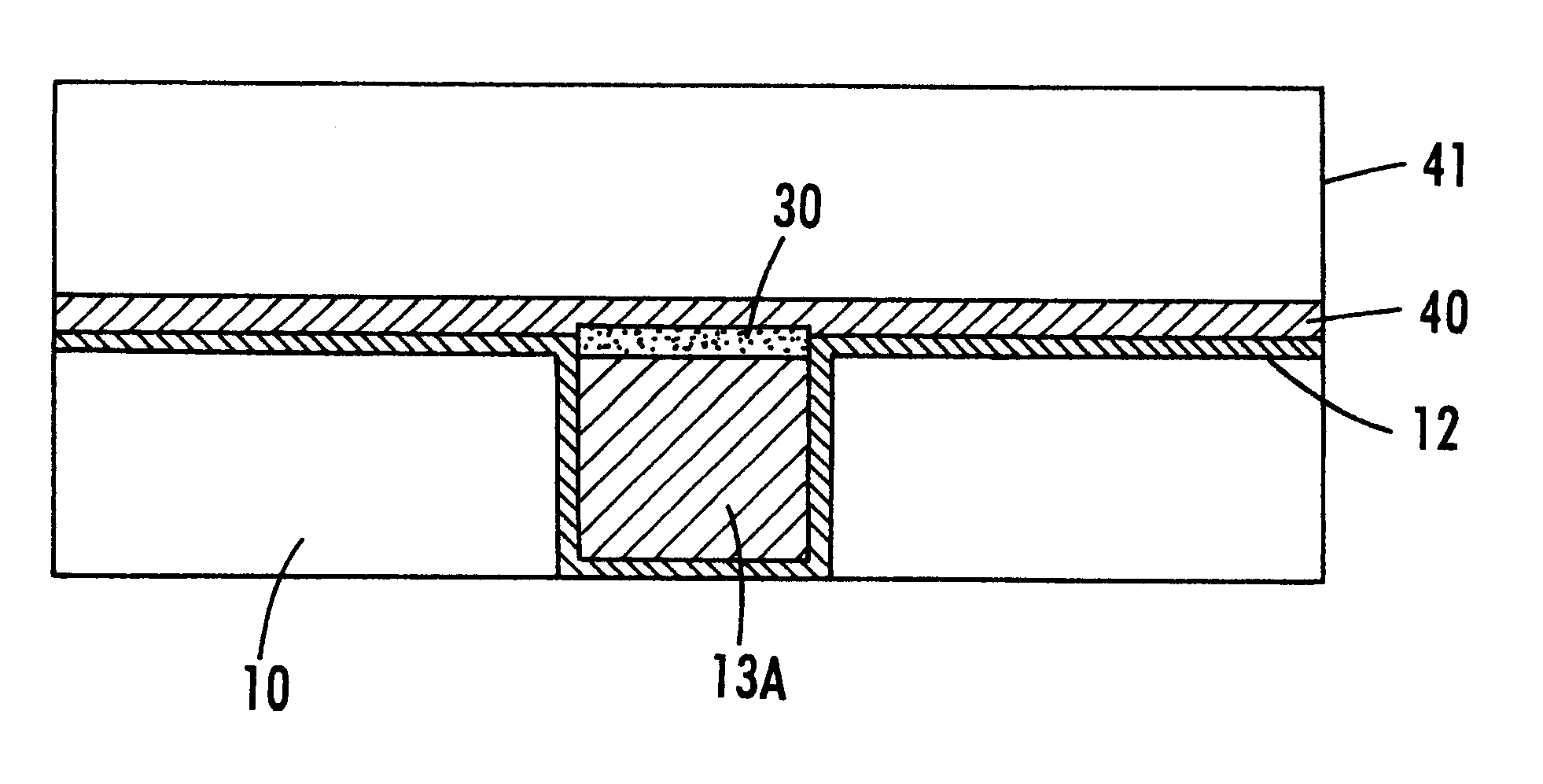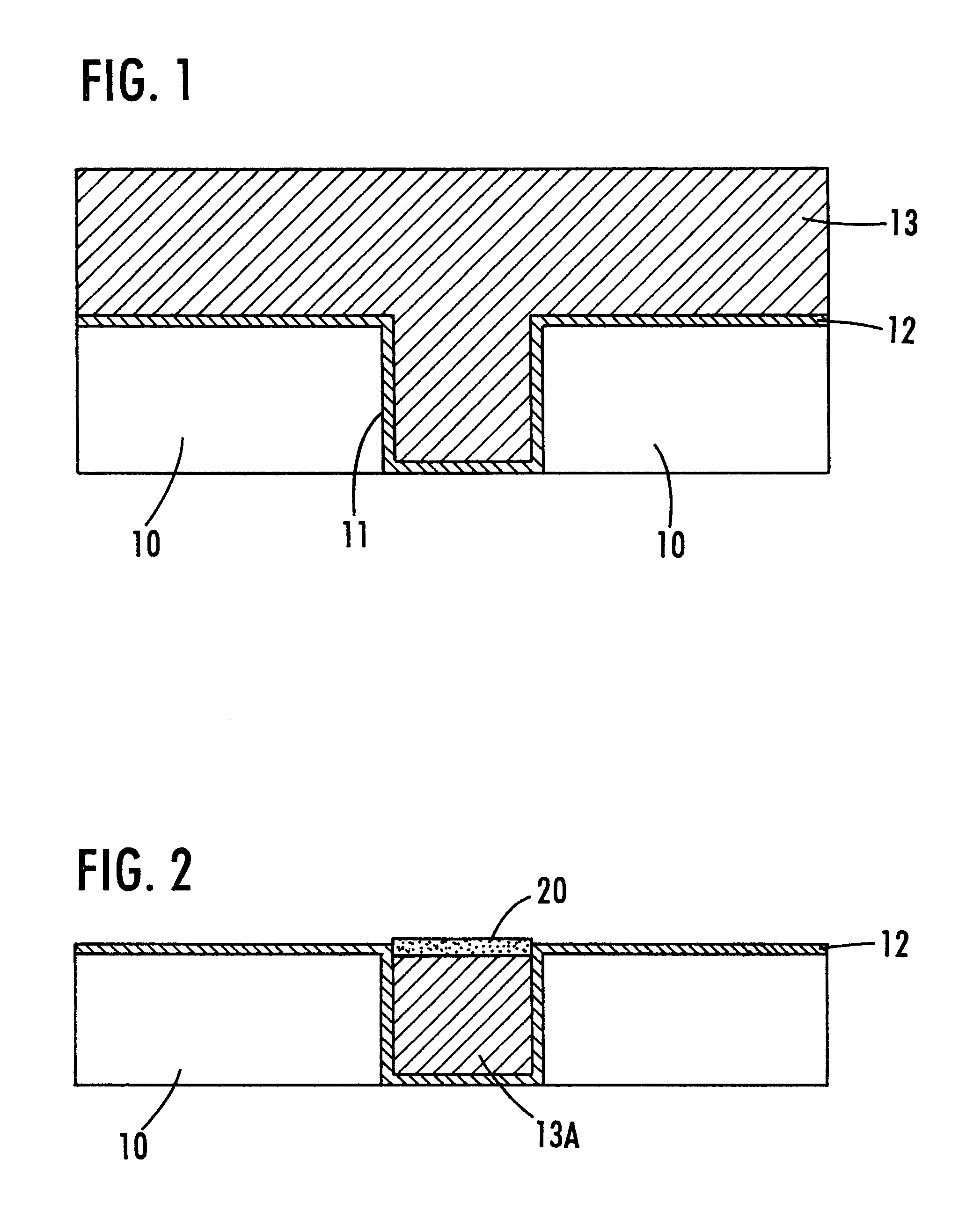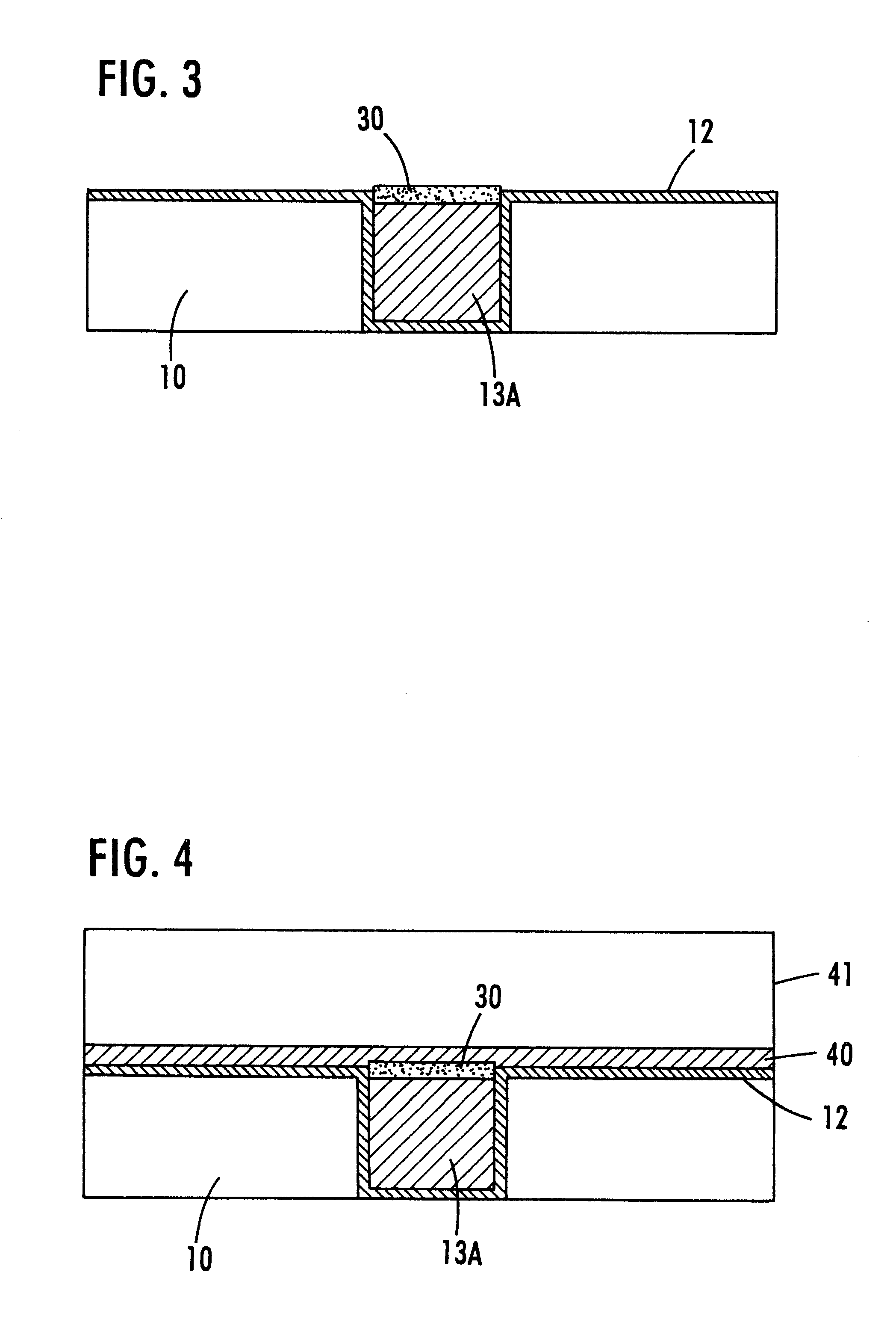Method of improving adhesion of capping layers to copper interconnects
a technology of copper interconnects and capping layers, which is applied in the direction of semiconductor devices, semiconductor/solid-state device details, electrical equipment, etc., can solve the problems of poor adhesion of capping layers to cu or cu alloy surfaces, escalating requirements that are difficult to meet, and capping layers such as silicon nitride, deposited by plasma enhanced chemical vapor deposition (pecvd),
- Summary
- Abstract
- Description
- Claims
- Application Information
AI Technical Summary
Benefits of technology
Problems solved by technology
Method used
Image
Examples
Embodiment Construction
The present invention addresses and solves problems attendant upon capping a Cu or Cu alloy interconnect, as with a capping or barrier layer of silicon nitride. Methodology in accordance with embodiments of the present invention enables a significant improvement in the adhesion of a barrier layer, such as silicon nitride, to a Cu or Cu alloy interconnect member, thereby preventing barrier layer peeling, preventing diffusion and enhancing electromigration resistance. In addition, the present invention provides methodology enabling the deposition of a barrier layer, such as silicon nitride, having a significantly increased density thereby significantly enhancing the ability of the barrier layer to function as an etch stop layer during formation of interconnects for subsequent metallization levels. As employed throughout this application, the symbol Cu is intended to encompass high purity elemental copper as well as Cu-based alloys, such as Cu alloys containing minor amounts of tin, zi...
PUM
| Property | Measurement | Unit |
|---|---|---|
| frequency power | aaaaa | aaaaa |
| thickness | aaaaa | aaaaa |
| density | aaaaa | aaaaa |
Abstract
Description
Claims
Application Information
 Login to View More
Login to View More - R&D
- Intellectual Property
- Life Sciences
- Materials
- Tech Scout
- Unparalleled Data Quality
- Higher Quality Content
- 60% Fewer Hallucinations
Browse by: Latest US Patents, China's latest patents, Technical Efficacy Thesaurus, Application Domain, Technology Topic, Popular Technical Reports.
© 2025 PatSnap. All rights reserved.Legal|Privacy policy|Modern Slavery Act Transparency Statement|Sitemap|About US| Contact US: help@patsnap.com



